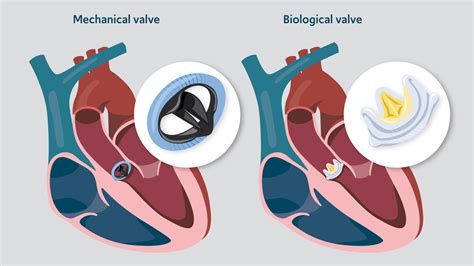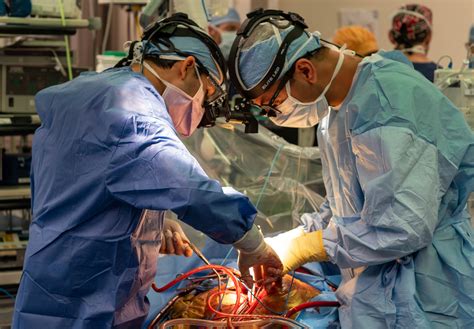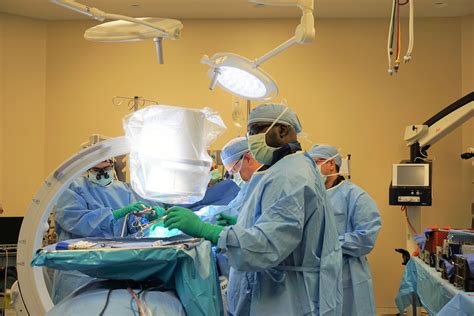Intro
Discover how heart valve replacement surgery works with 5 innovative methods, utilizing transcatheter and open-heart techniques to treat valve disease, improving cardiac function and overall health through minimally invasive procedures and surgical interventions.
The human heart is a complex and vital organ, responsible for pumping blood throughout the body. It is made up of four chambers, including the left and right atria, and the left and right ventricles. The heart also contains four valves, which play a crucial role in regulating blood flow and preventing backflow. However, in some cases, these valves can become damaged or diseased, requiring surgical intervention. One such intervention is heart valve replacement surgery, a life-saving procedure that has revolutionized the treatment of heart valve disorders. In this article, we will delve into the world of heart valve replacement surgery, exploring its benefits, mechanisms, and the various ways it works.
Heart valve replacement surgery is a highly complex and delicate procedure, requiring great skill and precision. The goal of the surgery is to replace the damaged or diseased valve with a new one, either mechanical or biological, to restore normal blood flow and prevent further complications. With advancements in medical technology, heart valve replacement surgery has become a highly effective and safe procedure, offering new hope to patients suffering from heart valve disorders. Whether it's aortic stenosis, mitral regurgitation, or another condition, heart valve replacement surgery can significantly improve the quality of life and increase life expectancy.
The importance of heart valve replacement surgery cannot be overstated. According to the American Heart Association, over 5 million people in the United States suffer from heart valve disorders, with many more cases going undiagnosed. If left untreated, these disorders can lead to serious complications, including heart failure, stroke, and even death. However, with the advent of heart valve replacement surgery, patients can now receive effective treatment and regain control over their lives. In this article, we will explore the various ways heart valve replacement surgery works, including the different types of valves used, the surgical procedures involved, and the benefits and risks associated with the surgery.
Introduction to Heart Valve Replacement Surgery

Types of Heart Valves Used in Replacement Surgery
There are two main types of heart valves used in replacement surgery: mechanical valves and biological valves. Mechanical valves are made of metal or plastic and are designed to last for many years. They are highly durable and resistant to wear and tear, but require the patient to take blood-thinning medication for the rest of their life to prevent blood clots from forming on the valve. Biological valves, on the other hand, are made from animal tissue or human donor tissue and are designed to be more natural and biocompatible. They have a shorter lifespan than mechanical valves but do not require blood-thinning medication.The Surgical Procedure

Benefits and Risks of Heart Valve Replacement Surgery
Heart valve replacement surgery is a highly effective and safe procedure, offering many benefits to patients suffering from heart valve disorders. Some of the benefits include improved blood flow, reduced symptoms, and increased life expectancy. However, as with any surgical procedure, there are also risks involved. Some of the potential risks include bleeding, infection, and stroke. Additionally, patients may experience complications such as valve failure, endocarditis, or arrhythmias. It is essential for patients to discuss the benefits and risks with their doctor to determine if heart valve replacement surgery is right for them.Recovery and Follow-Up Care

Lifestyle Changes After Heart Valve Replacement Surgery
After heart valve replacement surgery, patients may need to make lifestyle changes to promote healing and prevent complications. Some of these changes include avoiding strenuous activities, quitting smoking, and following a healthy diet. Patients may also need to take medication for the rest of their life to prevent blood clots and promote healing. It is essential for patients to work closely with their medical team to develop a personalized plan for recovery and follow-up care.Advances in Heart Valve Replacement Surgery

Future Directions in Heart Valve Replacement Surgery
The future of heart valve replacement surgery is promising, with ongoing research and development of new valve technologies and surgical techniques. Some of the potential future directions include the use of 3D printing to create customized valves, the development of new materials and designs for mechanical valves, and the use of gene therapy to promote valve healing and regeneration. As medical technology continues to evolve, we can expect to see even more innovative and effective treatments for heart valve disorders.Conclusion and Next Steps

What is heart valve replacement surgery?
+Heart valve replacement surgery is a type of cardiac surgery that involves replacing a damaged or diseased heart valve with a new one.
What are the benefits of heart valve replacement surgery?
+The benefits of heart valve replacement surgery include improved blood flow, reduced symptoms, and increased life expectancy.
What are the risks of heart valve replacement surgery?
+The risks of heart valve replacement surgery include bleeding, infection, and stroke, as well as complications such as valve failure, endocarditis, and arrhythmias.
How long does it take to recover from heart valve replacement surgery?
+The recovery time for heart valve replacement surgery typically ranges from several days to several weeks, depending on the individual patient and the complexity of the procedure.
What kind of follow-up care is required after heart valve replacement surgery?
+After heart valve replacement surgery, patients typically require regular follow-up appointments with their doctor to monitor their progress and adjust their treatment plan as needed.
